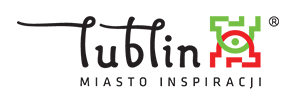
Rafał Henryk Kartaszyński, PhD is the President of Pro-Project Group, a leading company in the medical device quality control industry and owner of the global Diagnomatic brand, which is directly present in over 110 countries worldwide. He has extensive experience in managing companies in the medical and IT industries and in the internationalisation of enterprises. He currently works in the company’s US office in Las Vegas. He shares his knowledge with companies from the Cluster and with young entrepreneurs who are looking for mentoring and support, making use of their activity on the international market, including the US market. He is also a member and mentor at Biz Assembly Platinum.
Looking at the medical technologies that have become widely used since the beginning of 2020, I am very curious to see what the healthcare market will look like in the next decade. I think that in the coming years, the greatest emphasis will be placed on the following trends. These will allow for better diagnostics not only in facilities, but also in our homes – which can significantly speed up treatment, for example, by avoiding a long wait for a basic test at the hospital.
Telemedicine – This is the simplest form of on-demand service on the list of technology trends in healthcare. Not every patient needs to go to the emergency room or hospital to consult a doctor, and teleconsultation may be the most suitable alternative. For hospitals, this is also an option to save money, as many consultations really can take place outside of the facility.
Internet of Medical Things (IoMT) – For patients and healthcare professionals, IoMT devices will transform healthcare. They will play a key role in tracking, preventing and treating chronic diseases. Remote Patient Monitoring is worth a special focus here.
Wearables – These technologies are no longer as rare as they were just a few years ago. Sensors in consumer devices have now become reliable enough to be considered medically useful. For example, the ECG function on the Apple Watch has been approved by the FDA for detecting atrial fibrillation. The development of such devices will help to efficiently aid diagnosis and treatment.
Healthcare Data Interoperability – Here a great deal of emphasis should be placed on the electronic medical records that are being developed. With these, patients can more easily access and share their health information with others.
VR and AR – These technologies are playing a big role in healthcare technology trends. The most obvious example is training for surgeons. VR training allows medical professionals to practice and improve their skills without having to be in the hospital.
As you can see, the above trends are highly interconnected. Most of them are based on reducing the need to go to hospitals and medical facilities for consultation or examination. While this may seem less important for people living in large urban centers, it is crucial for people living in remote regions, as well as for those with mobility problems. This gives them a chance for a good diagnosis and access to professional health care.
